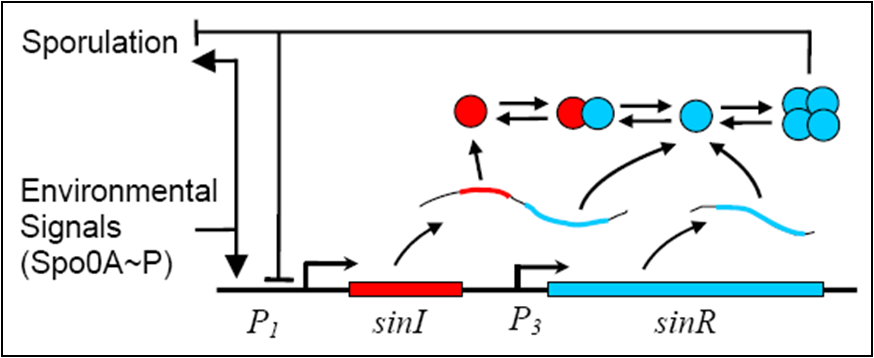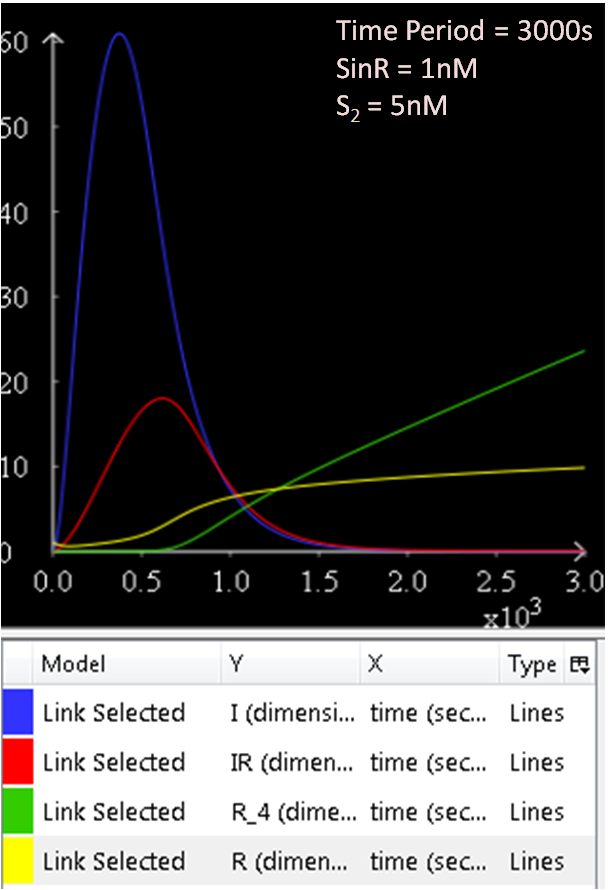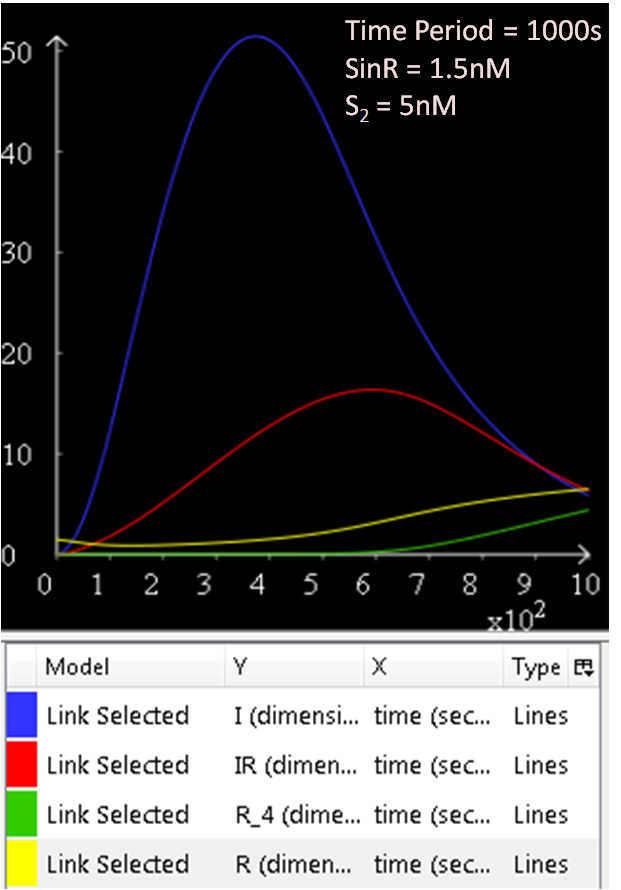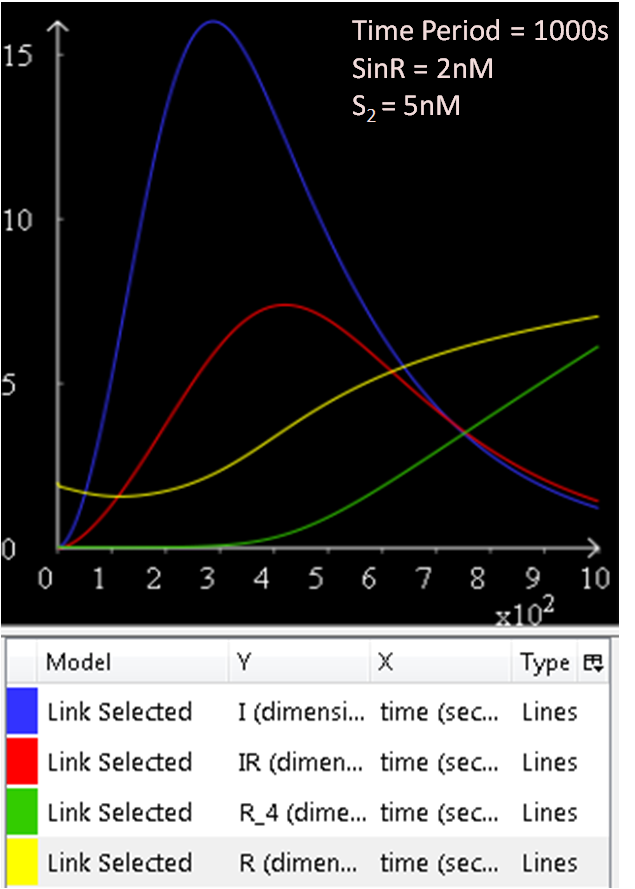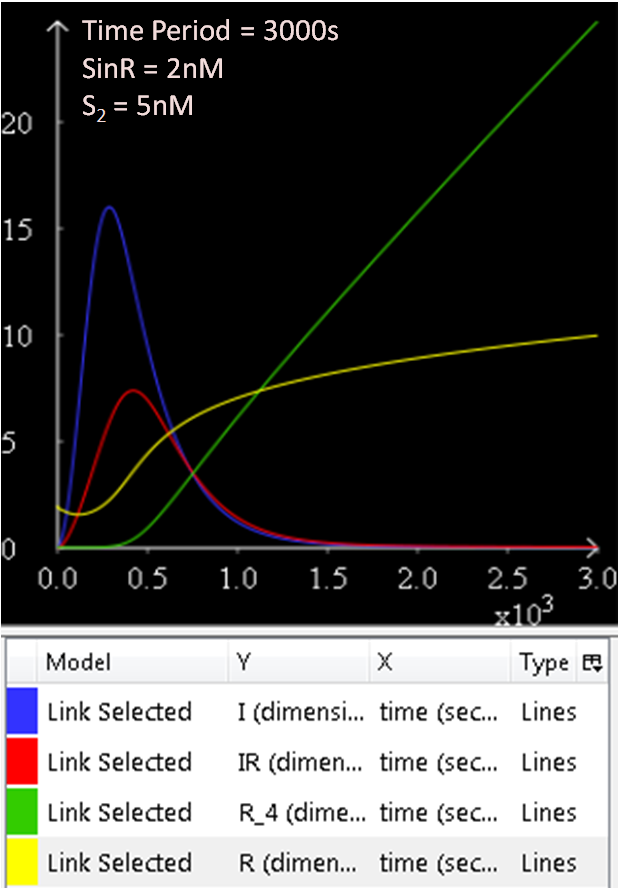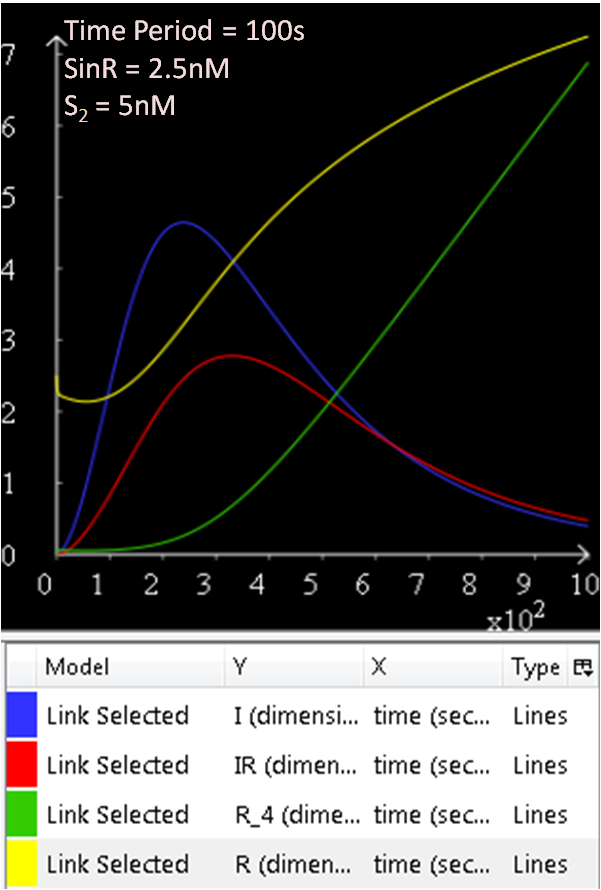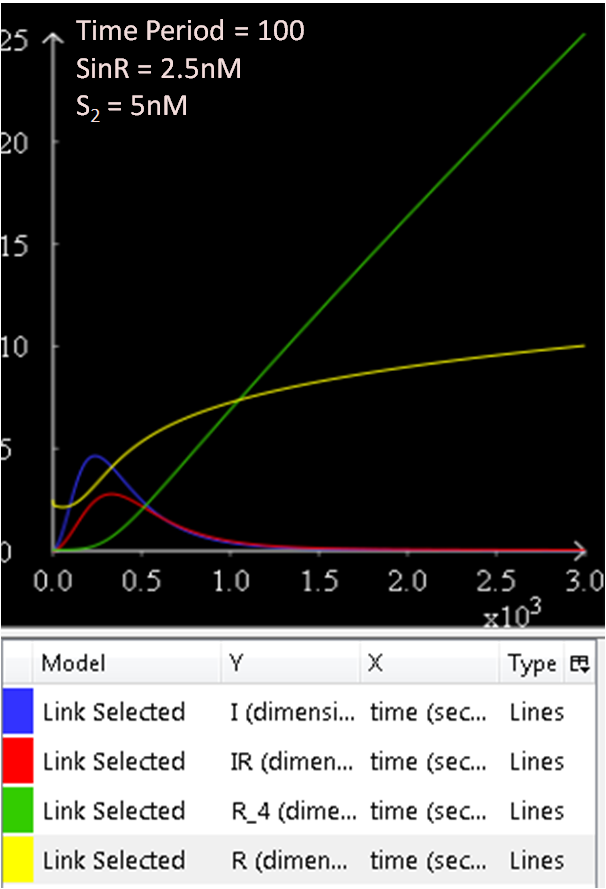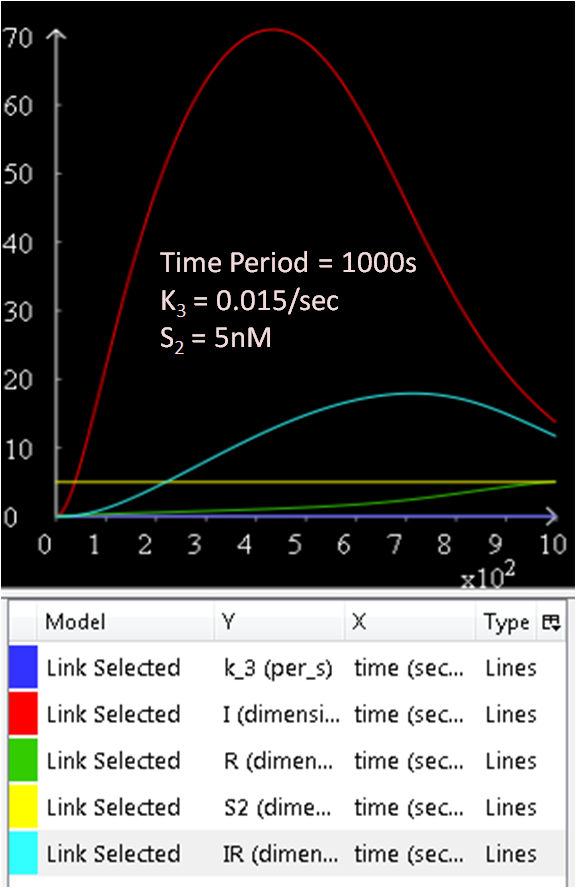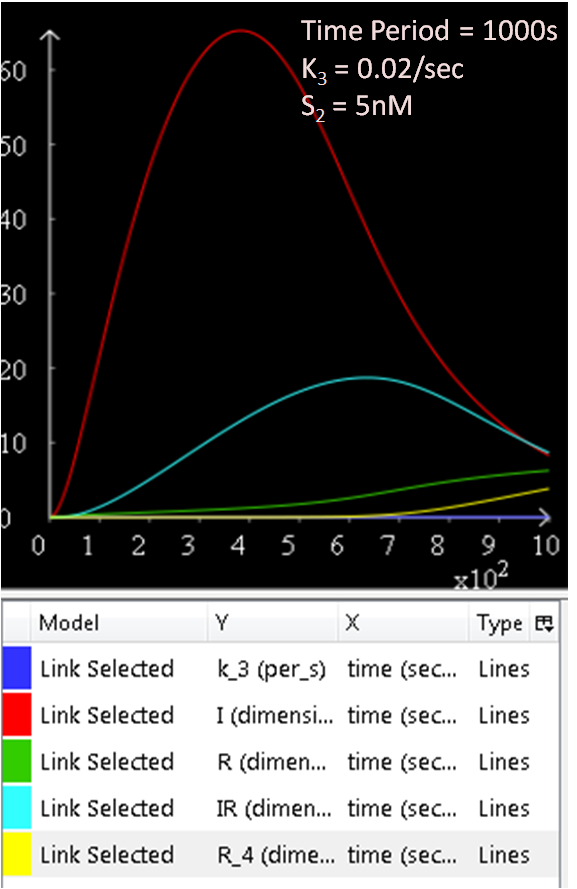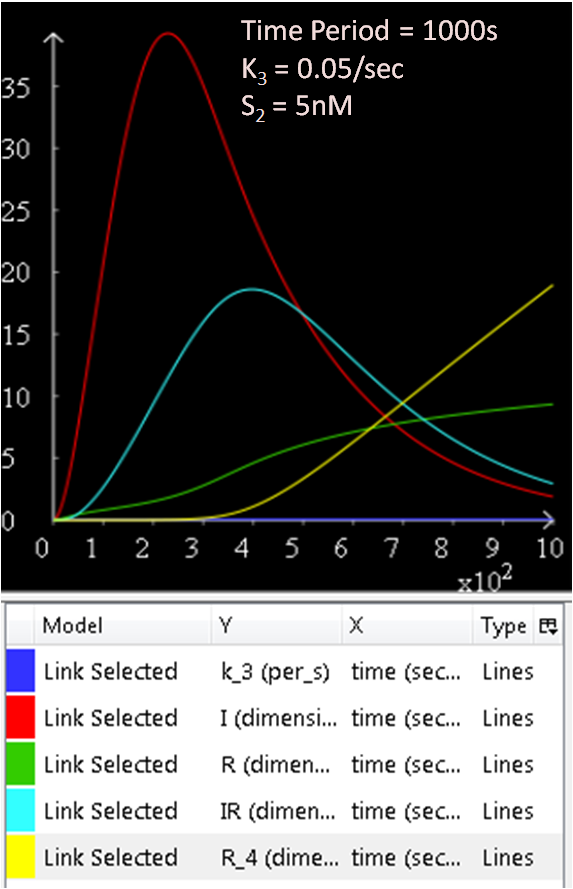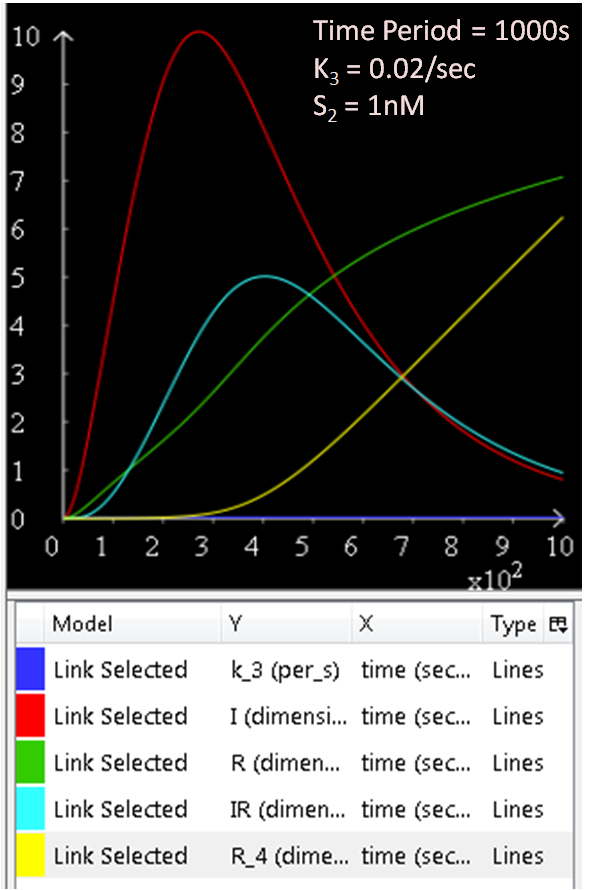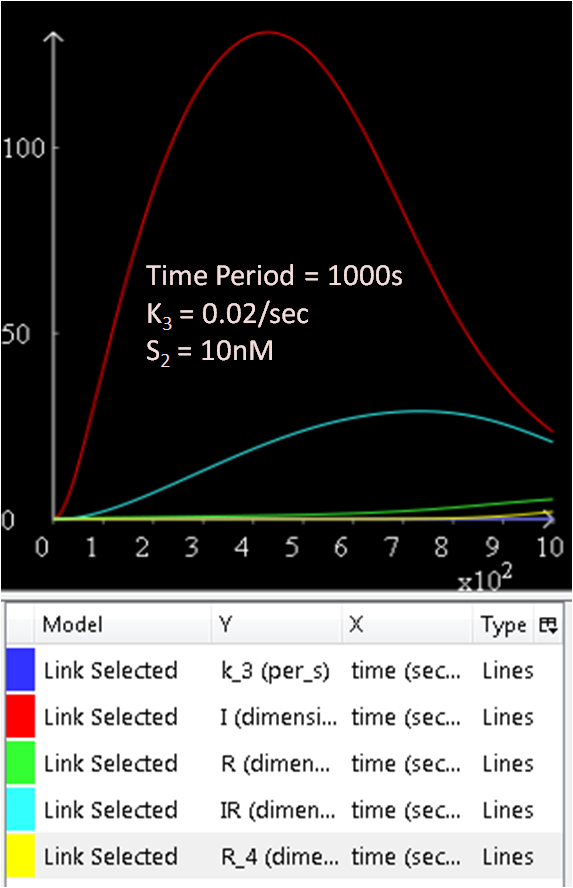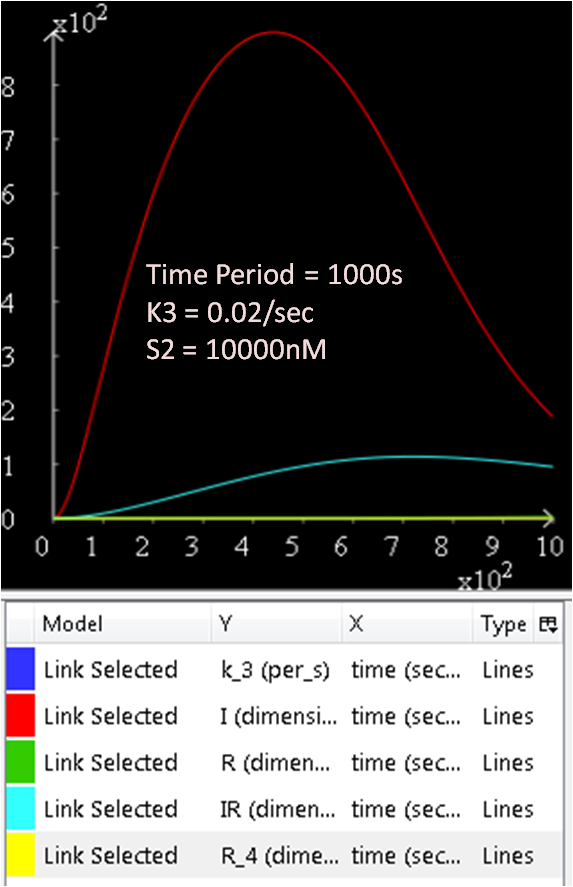Team:Newcastle/Modelling/SinOperon
From 2009.igem.org
(→Sin (sporulation inhibition) Operon Model) |
(→Sin (sporulation inhibition) Operon Model) |
||
| Line 106: | Line 106: | ||
'''The Sin (sporulation inhibition) Operon Model is available for download as follows:''' | '''The Sin (sporulation inhibition) Operon Model is available for download as follows:''' | ||
| - | * Text format: [[Media:TeamNewcastleSinOperonModel.txt]] | + | * Text format: [[Media:TeamNewcastleSinOperonModel.txt| Sin Operon Model]] |
Latest revision as of 01:54, 22 October 2009
Sin (sporulation inhibition) Operon Model
In order to create a more realistic model of our sporulation system, in addition to the previous model, the team has decided to include the Sin (sporulation inhibition) Operon Model, which the team designed in CellML.
The sin operon controls the production and activity of the repressor SinR, which in its active tetrameric form, inhibits sporulation by repressing stage II and spo0A promoters. On the other hand, the accumulation of Spo0A~P induces the expression of SinI, which binds to and inactivates SinR.[9]
With reference to Diagram 1, the parameters varied in this model, are the concentration of SinR, S2, as well as k3.
The following differential equations makes up a deterministic model which describes the Sin Operon.[9]
where:
AI, the expression rate of SinI = 0.8 sec-1
γI, the degradation rate of SinI = 0.02 sec-1,
kIon, the rate of the formation of dimers = 0.083 nM-1 sec-1,
kIoff, the off rate for SinI:SinR = 0.5 sec-1,
where:
AR, the expression rate of SinR = 0.014 sec-1
γR, the degradation rate of SinR = 0.002 sec-1
kRoff, the off rate for SinR tetramers = 0.5 sec-1
kRon, the rate for tetramer formation = 0.00125 nM-3 sec-1
where:
k1, the transcription rate from P1 = 0.15 sec-1
γ1, the degradation rate of m1 = 0.005 sec-1
where:
γ3, the degradation rate of m1 = 0.005 sec-1
where:
[S2] is the concentration of Spo0A~P dimers,
[R4] is the concentration of SinR tetramers,
[RNAP] = 30 nM is the concentration of free RNA polymerase available for transcription.
The equilibrium association constants Ki, where RT = 1.62, are defined as:
K2 = exp(-∆G2/RT) x 1e-9, where ∆G2 = -10.5
K3 = exp(-∆G3/RT) x 1e-9, where ∆G3 = -12.5
K4 = exp(-∆G4/RT) x 1e-9, where ∆G4 = -9.0
K5 = exp(-∆G5/RT) x 1e-9, where ∆G5 = -21.5
K6 = exp(-∆G6/RT) x 1e-9, where ∆G6 = -21.5
K7 = exp(-∆G7/RT) x 1e-9, where ∆G7 = -22.5
K8 = exp(-∆G8/RT) x 1e-9, where ∆G8 = -33.5
The Sin (sporulation inhibition) Operon Model is available for download as follows:
- Text format: Sin Operon Model
Results
In the next few graphs, the concentration of SinR is varied to see how it affects the system.
From Figure 1.1 and 1.2, which are essentially the same graphs, but at different time durations, it is observed that when the concentration of SinR is set at 1nM, the SinI concentration reaches a maximum of approximately 60nM.
Referring to Figure 2.1 and 2.2, when the concentration of SinR is increased to 1.5, the concentration of SinI drops to approximately 50nM.
When the concentration of SinR is set to 2nM, as seen in Figure 3.1 and 3.2, the concentration of SinI reaches a maximum of approximately 15nM.
Comparing the previous results obtained, it seems like the concentration of SinI is most affected when the concentration of SinR is set at 2nM.
The concentration of SinI further drops to 5nM when the concentration of SinR is increased to 2.5nM.
The results from figures 1 to 4 shows that SinR does repress SinI. The greater the concentration of SinR, the lower the concentration of SinI. Also, the concentration of the SinR tetramers (R4) increases as well.
As seen in Diagram 1, k3 is a rate constant of P3. Therefore, at a low k3 value, a high concentration of SinI would be expected. This theory is explored and the results are as follows:
Figure 5.1, 5.2, and 5.3 justifies the theory, as it can be observed that the greater the k3 rate constant, the lower the SinI concentration.
The following graphs will investigate the effect on the system when the Spo0A protein concentration, [S2] is varied. The rate constants k3 will be kept constant. The suggested range for [S2] is 1 to 10 000nM.[9]
From the above three figures, Figure 6.1, 6.2 and 6.3, the concentration of SinI increases as [S2] increases.
Other Models
News
Events
- 20 – 21 June 2009 - Europe workshop (London)
- 23 – 24 June 2009 - UK iGEM meetup (Edinburgh)
- 23 October Practice Presentation (Newcastle)
- 23 October T-shirts are ready
- 27 October Practice Presentation (Sunderland)
- 27 October Poster is ready
- 30 October – 2 November 2009 - Jamboree (Boston)
Social Net
 "
"

